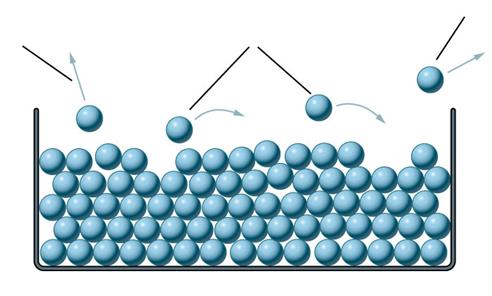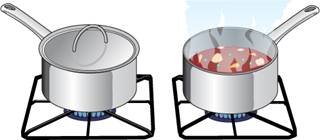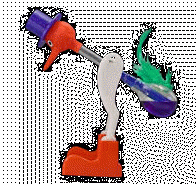|
Evaporation
and Condensation II
Objectives
• Investigate factors affecting the rate of
evaporation.
• Compare the cooling effect produced as the rate of
evaporation is altered.
• Be able to describe and explain processes involving
evaporation and condensation, and compare different scenarios in terms
of the rate of evaporation.
Task 1 - Recap
The particles in a liquid have a range of energies.
Remind the person next to you:
• Why some particles end up with more energy than
others.
• How the average thermal energy is connected
to the temperature.
• How this leads to the process of evaporation.

Task 2
We are going to wrap two thermometers in cotton wool
which has been soaked in propanone, and monitor their temperatures for 5
minutes. We will place one thermometer in front of a desk fan.
Which thermometer will cool down more rapidly?
Why do you think this is? Write a prediction what you think
will happen and why, giving as many scientific reasons as you can.
|
"I predict the thermometer
__________ the fan will cool down more rapidly because...." |
When you have finished copy the table below into your book
to record your results:
| |
Temperature (˚C) |
|
Time
(mins) |
Thermometer A
(with fan) |
Thermometer B
(without fan)
|
|
0 |
|
|
|
1 |
|
|
|
2 |
|
|
|
3 |
|
|
|
4 |
|
|
|
5 |
|
|
Work out the temperature decrease of each thermometer.
Which thermometer cooled more rapidly? Write a few sentences to
explain what you found, and explain why it happened.
Task 3
Use your understanding of evaporation to answer
these questions:
| 1. Look at these saucepans. How will
evaporation affect how quickly the contents of the saucepans
will heat up? |
 |
| 2. Look at these clothes on the washing
line. Which clothes will dry quickest and why? |
 |
| 3. Look at the window behind this cooker.
Can you explain why the glass is covered with condensation? |
 |
There is a support sheet
here to help with question 3, if required.
|

